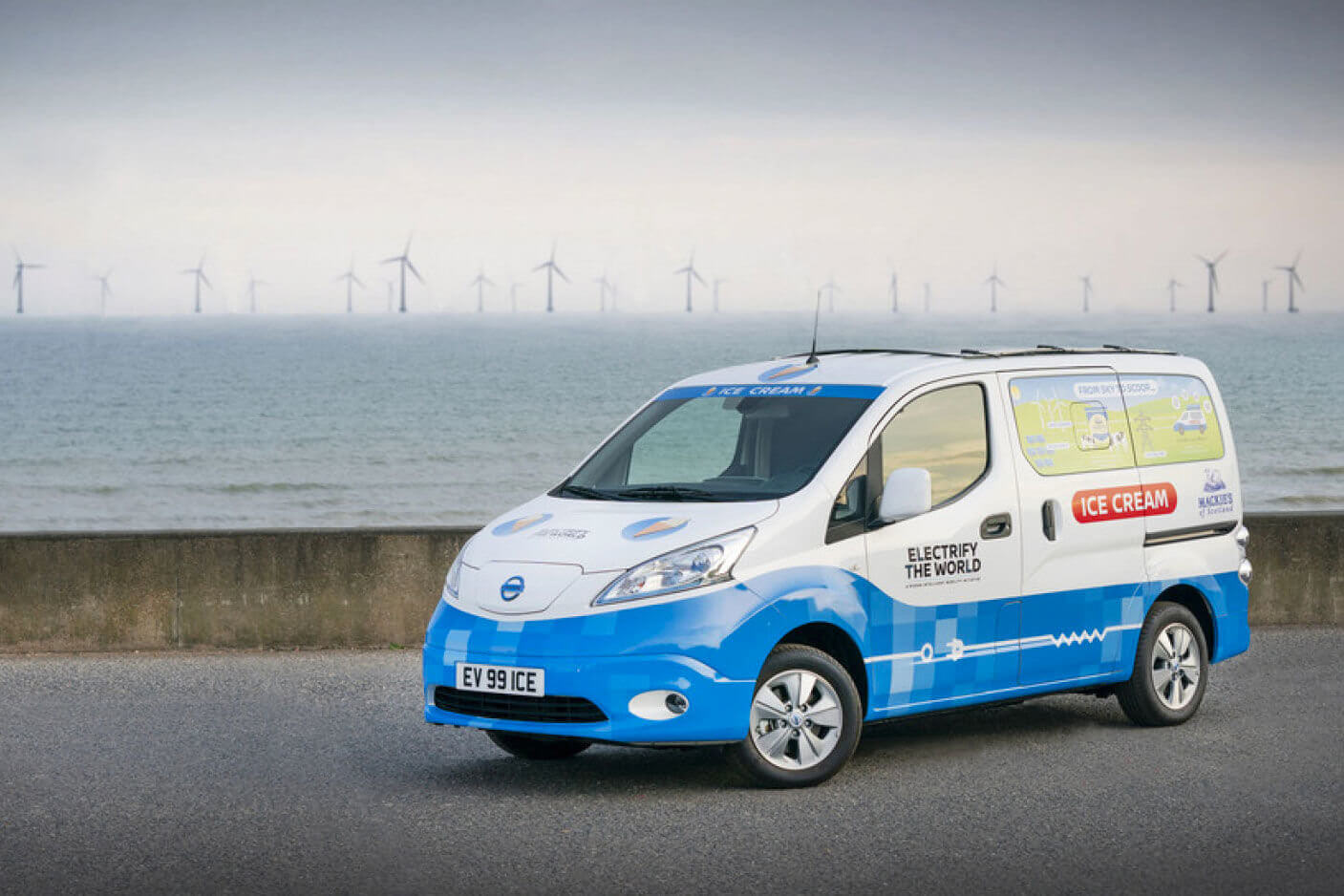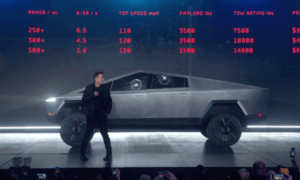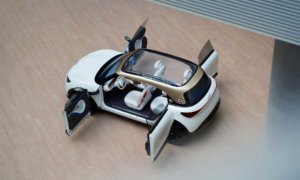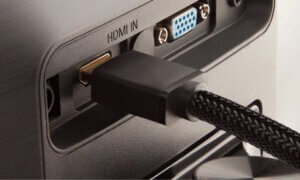Ice cream trucks are a relic of childhood most of us remember fondly from the seemingly endless summers we spent outside under the hot sun. However, what we were not aware of back then was that these trucks have diesel engines and older models keep those engines running around the clock in order to power the freezers.
So, does it mean we’ll have to think of ice cream trucks as a thing of the past?
Nissan doesn’t want us to. More so, it wants to prove that vendors can reduce their carbon footprint while still delivering the best possible experience to their customers.
That’s why, to celebrate United Kingdom’s Clean Air Day, the company unveiled a zero-emission ice cream truck (well, a van, technically) concept it has called Sky to Scoop.
“Ice cream is enjoyed the world over, but consumers are increasingly mindful of the environmental impact of how we produce such treats, and the ‘last mile’ of how they reach us,” Kalyana Sivagnanam, managing director, Nissan Motor (GB) has said in a statement. “This project is a perfect demonstration of Nissan’s Intelligent Mobility strategy, applying more than a decade of EV experience and progress in battery technology to create cleaner solutions for power on the go – in ways customers might not expect. By eliminating harmful tailpipe emissions, and increasing our use of renewable energy, we can help make this a better world for everyone.”
The prototype draws inspiration from another Nissan vehicle: the e-NV200, an electric commercial vehicle with a 124-mile range.
The vehicle’s motor is driven by a 40kWh battery while the ice cream equipment, which includes a soft-serve machine, freezer drawer and drinks fridge are all powered by the Nissan Energy ROAM, which has just recently been unveiled to the public.
The ROAM is a portable power pack that uses the lithium-ion cells that were recycled from the early first-generation Nissan electric vehicles.
This is how Nissan proves to us all that re-usability is viable even in the automotive industry.
The batteries can be recharged either via a 230v main supply or the solar panel array that rests on the van’s roof. A solar recharge usually takes around 2 to 4 hours while a full one via the main supply, about one hour.
“The Clean Air Day campaign is here to celebrate innovation and accelerate action. We welcome Nissan’s efforts to make ice cream vans that serve up toxic fumes a thing of the past.” Chris Large, Sneior Partner for the Global Action Plan has said of Nissan’s concept van. “Schoolchildren campaigning for the Clean Van Commitment sent a video message to all van fleets encouraging them to get millions more electric vans on to UK roads in place of diesels. I think those children would love this project.”
Follow TechTheLead on Google News to get the news first.






























Pingback: DiscoverNet | The Untold Truth Of Ice Cream Trucks
Ana Dascalescu
May 13, 2022 at 3:37 pm
This is such a fantastic read, thanks for putting the article together!